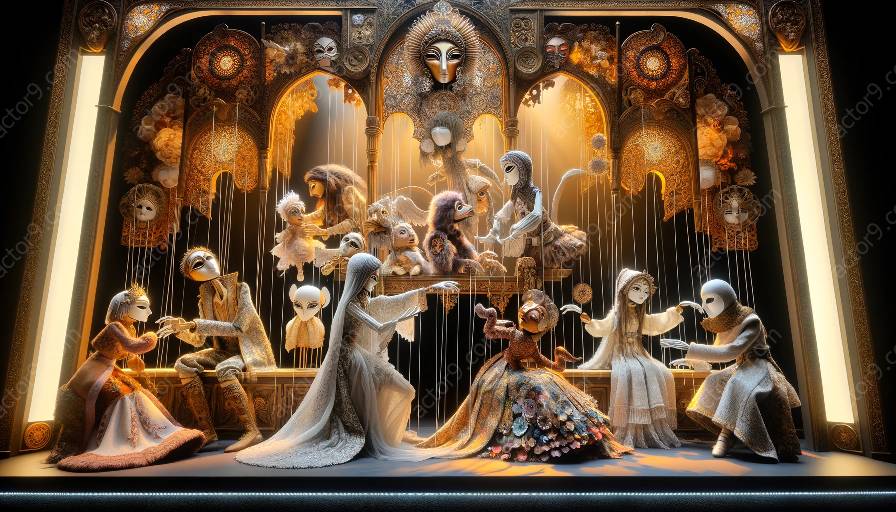Storytelling, a timeless art form, has evolved through various mediums, and puppetry and mask work are no exception. The use of puppets and masks in performances adds a unique layer to storytelling, captivating audiences through visual and theatrical expressions. Improvisation, the art of creating and performing spontaneously, has proven to be a valuable tool for enhancing storytelling in puppetry and mask work.
The Role of Improvisation in Puppetry and Mask Work
Improvisation in puppetry and mask work enables performers to adapt and respond to unexpected situations, amplifying the storytelling experience. Puppetry, with its ability to bring inanimate objects to life, and mask work, with its transformative power, both benefit from the creative freedom and spontaneity that improvisation allows.
Connecting with the Essence of Characters
By incorporating improvisation into their performances, puppeteers and mask performers can delve deeper into the essence of their characters, channeling emotions, and creating authentic interactions. This connection with the characters enriches the storytelling, making it more compelling and relatable to the audience.
Engaging the Audience
Improvisation brings an element of surprise and unpredictability, engaging the audience in a more profound and immediate way. Through impromptu responses and interactions, performers can establish a deeper connection with the audience, making the storytelling experience more engaging and immersive.
The Impact of Improvisation in Theatre
While the significance of improvisation in puppetry and mask work is evident, its impact on the broader spectrum of theatre cannot be understated. Improvisation not only enhances storytelling but also fosters creativity, collaboration, and spontaneity among performers, contributing to the overall vitality of theatrical productions.
Fostering Creativity and Flexibility
Improvisation encourages performers to think on their feet, fostering creativity and flexibility. This adaptive mindset allows performers to explore various narrative possibilities, adding depth and richness to the storytelling process.
Building a Collaborative Environment
In theatre, improvisation nurtures a collaborative environment where performers build upon each other's ideas and contributions. This synergy among performers creates dynamic and compelling narratives, enriching the overall storytelling experience.
Embracing Spontaneity and Authenticity
Embracing spontaneity through improvisation adds an element of authenticity to performances, creating genuine connections between performers and the audience. This genuine interaction enhances the emotional impact of the storytelling, making it more resonant and memorable.
Relevance of Improvisation in Puppetry and Mask Work
Considering the inherent connection between improvisation and storytelling, the relevance of improvisation in puppetry and mask work becomes apparent. The dynamic nature of puppetry and mask work, coupled with the ability to transcend physical and emotional barriers, aligns seamlessly with the principles of improvisation.
Enhancing Expressive Possibilities
By embracing improvisation, puppeteers and mask performers can expand the expressive possibilities inherent in their art forms. This freedom to innovate and improvise allows for a more nuanced and evocative storytelling experience, pushing the boundaries of traditional narratives.
Exploring Multifaceted Characters
Improvisational techniques enable puppeteers and mask performers to delve into the complexities of their characters, bringing out multifaceted personalities and emotions. This exploration adds depth and authenticity to the characters, enhancing the overall storytelling and resonating with the audience on a profound level.
Empowering Performers and Engaging Audiences
Empowering performers with improvisational skills not only enriches their performances but also fosters a deeper connection with the audience. By infusing spontaneity and adaptability into puppetry and mask work, performers can create captivating narratives that captivate and immerse the audience in the storytelling process.
Conclusion
Improvisation, as a powerful and transformative tool, enhances storytelling in puppetry and mask work by fostering creativity, authenticity, and spontaneity. Its impact extends beyond these art forms, enriching the broader landscape of theatre with dynamic and engaging narratives. By embracing improvisation, performers can elevate the art of storytelling, creating immersive and captivating experiences for audiences.
Reference:
References: Improvisation in Storytelling: Beyond the Theatre




























